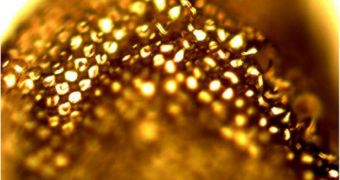For many years, science-fiction and fantasy writers have been inspired by the idea of making something or someone disappear from view. Be it a cloak, a potion, a spell or a ring, plot lines always feature a device that can render things invisible, hiding them from danger, or allowing them to slip by unnoticed. But, for an associate professor of electrical and computer engineering at the Michigan Technological University, achieving invisibility has long since exited the realm of fiction.
Elena Semouchkina has been working with complex scientific equipment, in a bid to develop a method of forcing light around various objects, essentially concealing them from view. Her approach relies on using the properties of magnetic resonance to capture and reroute visible light around targets, and also on a nonmetallic cloaking device that she developed with colleagues from the Pennsylvania State University. The innovative device uses identical glass resonators made out of the dielectric material known as chalcogenide glass.
The basis of this approach relies on the use of metamaterials, which the American Physical Society named one of the top three innovations of the decade. This class of materials belongs in equal part to the fields of materials science and electrical engineering, and their structure is what allows them to influence the path of light, routing it according to needs. The team, which also includes Penn State researchers Douglas Werner, Carlo Pantano and George Semouchkin, published a detailed view of their successes in using metamaterials in the latest issue of the esteemed journal Applied Physics Letters.
At this point, computer simulations show that the dielectric materials can only be used to cloak objects from infrared radiation. This type of light has a longer wavelength than that of visible light, which the human eye can perceive. “Starting from these experiments, we want to move to higher frequencies and smaller wavelengths. The most exciting applications will be at the frequencies of visible light,” concludes Semouchkina, adding that applications such as cloaking tanks are still decades away.

 14 DAY TRIAL //
14 DAY TRIAL //